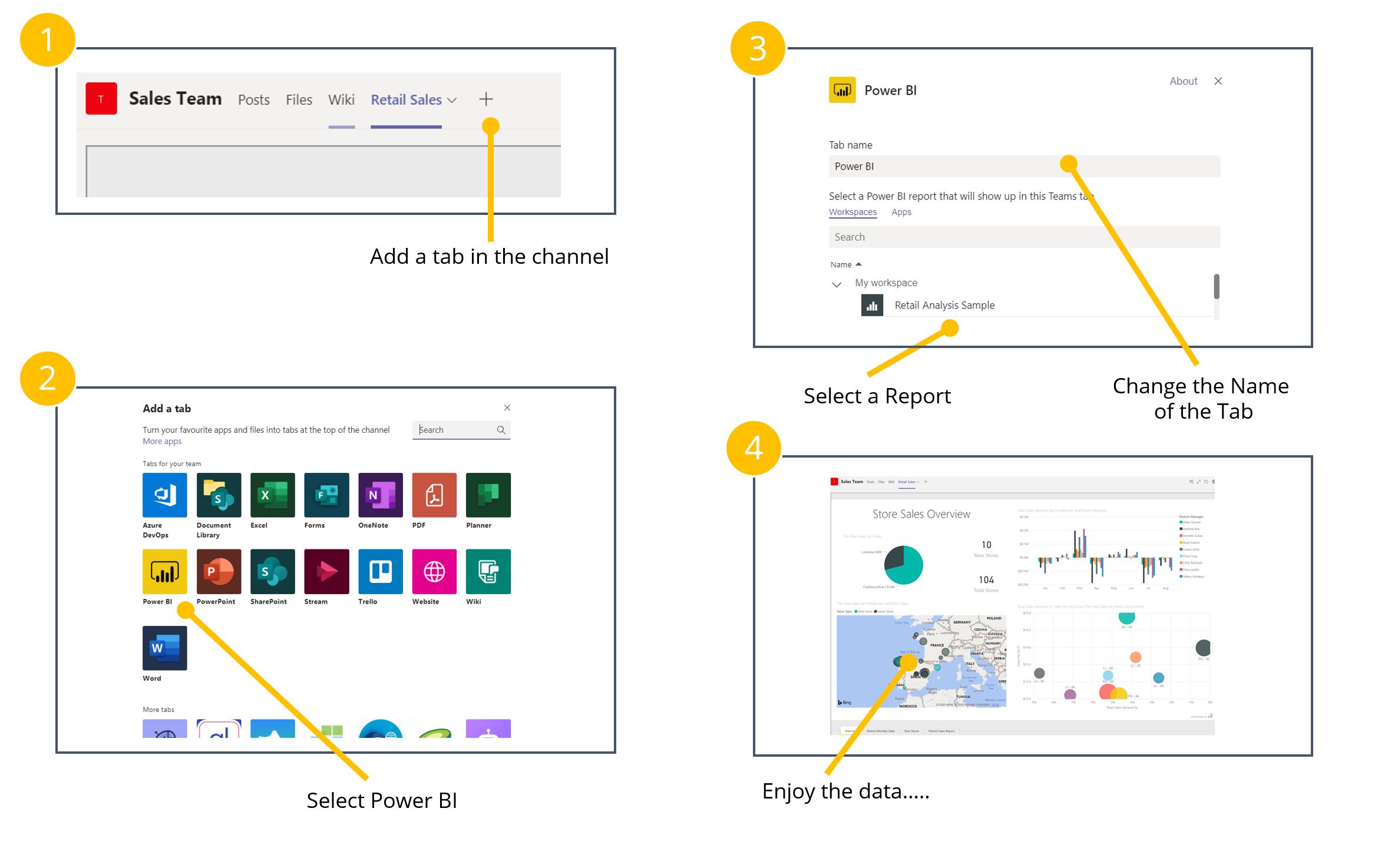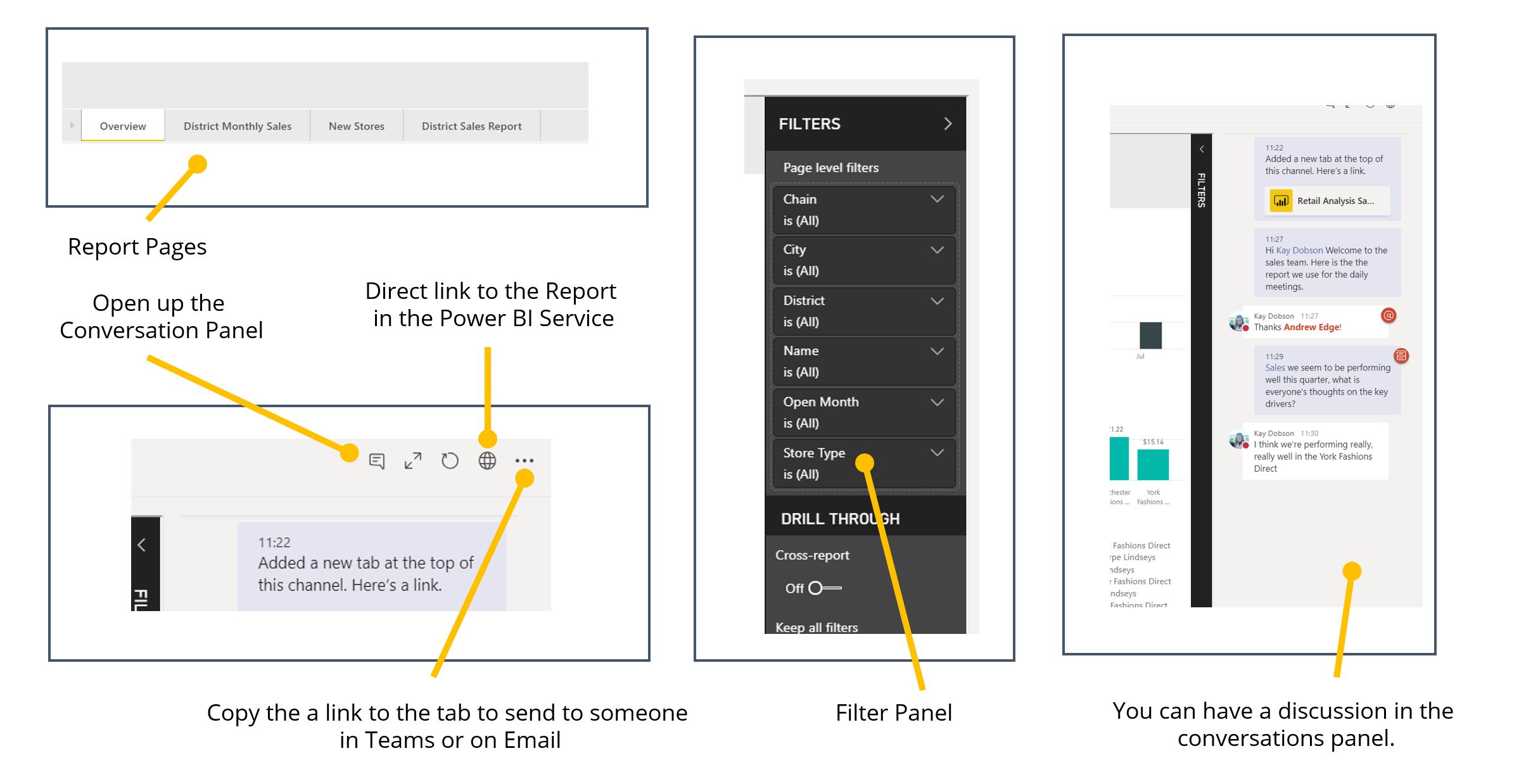Power BI and Teams – The best of both worlds
You have some great reports which deliver the insights that everyone is asking for. You have set up permissions and given access for them to consume and make more informed day to day and strategic decisions. Yet, not everyone is taking advantage of this great information.
Consumption of the insights is the final step and arguable the most important in the pursuit of empowering users to make effective decisions. As we all know, the best data strategy and BI platform can be implemented, but unless people use it, it’s not doing its job.
I am sure that most of us are familiar with the traditional debate around pushing reports to users versus them pulling the insights for themselves. Combining Power BI and Microsoft Teams is an opportunity to help increase consumption in a new way that embeds insights into day to day working lives.
Teams and Power BI
In Microsoft Teams you have the ability to add tabs to a channel. These tabs contain apps and files for easy access and the key thing is that the content can be oriented around the channel context. One of the many apps you can add is Power BI. The idea is that you add a tab per report so that the data associated with the channel operational process, business function or project is completely obvious. No more digging around in emails finding links or searching through a reporting portal to find that report everyone is talking about.
Adding a Power BI report to Teams

For you to be able to do this, you will of course need to have published the report to a workspace in Power BI.
Functionality
This approach allows for complete interactivity and exploration of the reports and the visualisations behave in the same way as they do in the service with all the report pages available at the bottom of the dashboard. The collapsible filter is available so that you can make selections easily. In addition there is a direct link to the report in the Power BI Service.

One of the most important features, which is a key driver in consumption and collaborative working, is the conversation panel, which can be toggle to be shown or hidden. The conversation feature here is exactly the same as with the standard Teams post and chat conversations, will all the usual things like, tagging users, bots, apps, meet now and notification of conversations.
All the conversations in the Power BI Report Tab will also appear on the main channel chat area, so users don’t have to be in the report tab to see the reporting discussion. Crucially this is only one way (unless you use the reply feature), meaning that if you converse in the main channel chat area, it doesn’t end up crowding the report discussion.
Permissions
In order to access the report in the tab, users must be given access to both the channel and the report in Power BI itself. The use of Groups can really help with granting access. Having to give permission twice might seem like an un-necessary step, but it gives complete control over data and if a user doesn’t have access to the report they just need to click on a button to request access, so the process is simple.
Why?
So how does this help with consumption and productivity?
- Users know the relevant reports they should be looking at for the context of the channel. If I am part of the project or section of a department It’s really easy to find the reports that I need to be using.
- Iterative discussions around the data can be had within the channel where everyone has access to the reports.
- Data Discussion can be incorporated into meetings easily and in fact be oriented around solving issues or exploiting opportunities that the insights identify. This is not limited to remote working, it can be used as part of a face to face meeting.
- Users can independently filter and slice the reports still within the context being discussed.
- The normal email debates and discussions around the data can be held within teams chat, removing the need for a big email discussion.
- Everyone is aware of the discussion and can proactively contribute to solve problems rather than wait to be invited.
Collaborative working using platforms like Teams is here to stay, accelerated by the current crisis. So let’s invite Power BI to the collaborate party to improve the way we work together, for ourselves and customers.
If you are interested in learning more about Teams, take a look at this blog by Ben Gannon from Phoenix Software, or alternatively if you’d like to have a chat and learn more about how Teams can come together with Power BI, please contact us at info@simpson-associates.co.uk or call us on 01904 234 510.
Blog Author
Andrew Edge, Data and AI Solution Lead, Simpson Associates
 Don’t forget to join us on Linkedin
Don’t forget to join us on Linkedin
View more Microsoft resources >


